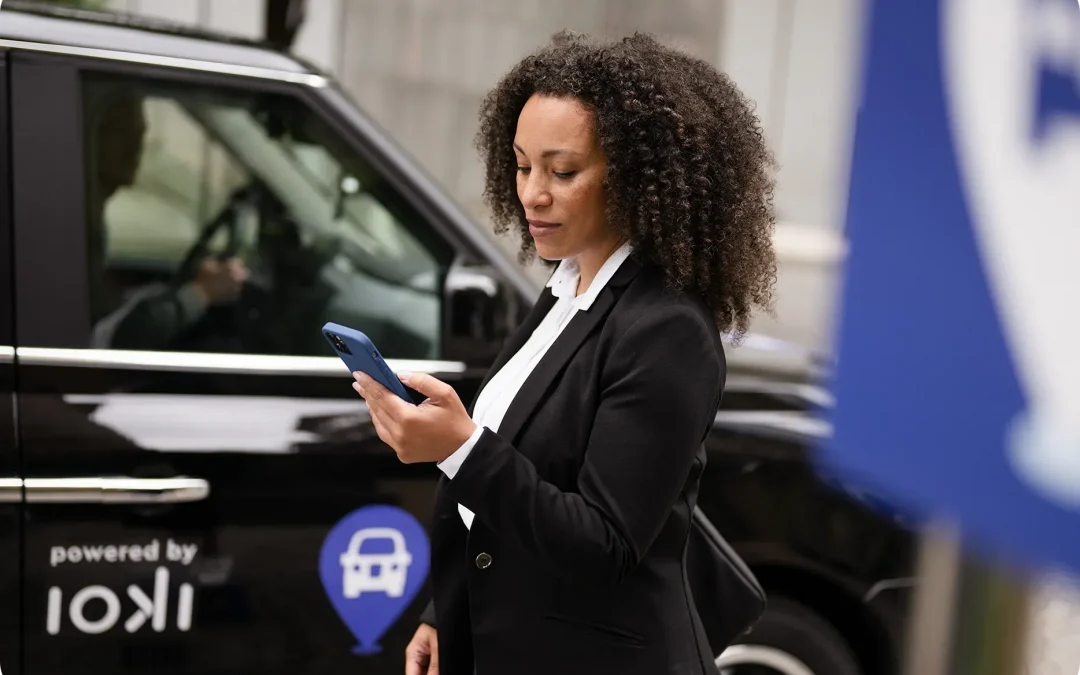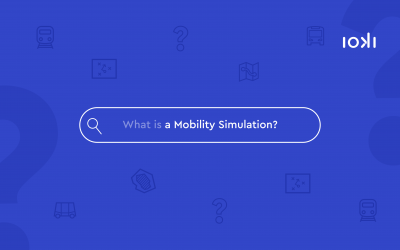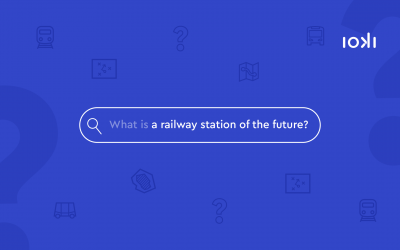With those parallels it makes sense that ioki insights took a closer look at what Smart Cities are and how new mobility is connected to them. That’s why we interviewed Mackenzie Banker, Global Private Sector Lead at Bable Smart Cities. She explained the concept and clarified how residents can profit from living in a Smart City. She updated us on the current status of Smart Cities in Europe and illustrated the role new mobility concepts play in improving urban life.
What is Bable Smart Cities? What is your origin story and what do you want to achieve?
BABLE Smart Cities is a private company that aims to accelerate the implementation of urban innovations, currently focused on Europe. We are a spin-off of the Fraunhofer Institute. Our founder, Alexander Schmidt, was working in Fraunhofer’s mobility department a decade ago when the European Commission was pouring over 700 million Euro into Smart City pilot projects in cities across Europe. Of course, the Commission was providing this funding with the expectation that the pilots would scale. Unfortunately, they did not. Fraunhofer was part of the EU Commission’s analysis to determine why this happened, and a key finding was that the right information was not reaching the correct stakeholders. That’s where the idea for BABLE was born – to serve as a marketplace and knowledge hub that aggregates the information about Smart Cities in one place so stakeholders can get access to the information they need and more easily collaborate with each other.
You call yourself “The facilitator for Smart Cities in Europe”. What is behind this claim?
As explained in our origin story, we bridge the gap between Public and Private Sector and aim to bring together the necessary stakeholders in the Smart City ecosystem to drive change for a better urban life. As a neutral facilitator, we have built a bridge between tech companies and the public sector, fostering partnerships that drive innovation and progress in Smart City projects. In addition to our Knowledge Hub, we regularly conduct events, workshops, and sessions in which perspectives from all stakeholders (such as from the quadruple helix model – Government, Businesses, Academia, and Citizens) are considered when designing strategies and implementing solutions.
What are Smart Cities and what does this have to do with new mobility? What does a Smart City mean for the area of mobility? How does mobility look like in a Smart City?
Our definition of a Smart City is a place where technology and innovation are used to solve problems and create a better future for everyone. It’s designed to put people at the centre, encouraging participation and inclusivity. The goal is to create sustainable, resilient, and liveable places that support thriving communities. Smart Cities focus on addressing social, economic, and environmental issues, as well as complex urban problems. This requires a holistic approach to urban management and new ways of thinking and problem-solving.
Smart Cities represent the natural progression of urban transformation, building on the foundations laid in the Middle Ages where the primary focus was on providing basic services, and the last century where the focus shifted towards optimising the use of space. Today, we strive to create more efficient and human-centred places, and Smart Cities enable us to achieve this vision.
For mobility, this means moving people and goods as efficiently, sustainably, and safely as possible, while providing a positive experience for those involved. The details will depend on the specific needs of each city, but in general it looks like providing active mobility options, optimising public transit routes to address the movement needs of the people, minimising vehicle traffic and congestion, moving to shared mobility models, electrifying the mobility sector, and providing a seamless, multi-modal experience for users.
What is the current status of Smart Cities in Europe?
Europe is aiming to be the first climate-neutral continent, and this focus on sustainability is really a key component of Smart Cities in Europe. The continent is aiming to reach net-zero by 2050, and over 100 European cities have already verbally committed to achieving net-zero by 2030. Further, for the first time in history, European cities are beginning to allocate one Billion Euro of funds annually to sustainable urban solutions. In this regard, Europe is really pushing the envelope globally. Yet on average it takes 22 months for a municipal government to implement an innovative technology. Without speeding up this cycle, European cities will never be able to hit their sustainability targets.
Further, for now it is typically the largest cities in Europe, such as the capital cities and second cities in each country, that have made the most advances. BABLE is focusing on the small and medium sized cities to help them more quickly implement urban innovations as supporting not just the largest cities will be crucial to hitting our sustainability targets.
Finally, the status also can vary widely by country or region, due to a number of factors including culture, politics, and economies.
Overall, Europe is making progress, but we need to accelerate!
What is the benefit for people living in a Smart City? How do Smart Cities improve the lives of its residents?
I would say a Smart City can benefit residents in three main areas:
- Costs – a Smart City should operate efficiently, reducing the burden on taxpayers, or at a minimum improving services without increasing costs to residents.
- Access – in a Smart City, citizens have access to better municipal services, transport options that can move them where they want to go, either for business or leisure purposes, great connectivity, education, cultural and learning opportunities, healthcare, and a way for their voice to be heard and to actively participate in their local decision-making process. Further, access is equal to all and not limited to those in certain neighbourhoods or with a certain socio-economic status.
- Well-being – Smart Cities have cleaner air and streets, more green spaces, active mobility options, less traffic and congestion, and are safer for its residents, leading to increased overall well-being.
Overall residents in Smart Cities receive better municipal services at lower costs, have access to more opportunities, and are healthier, both mentally and physically.



